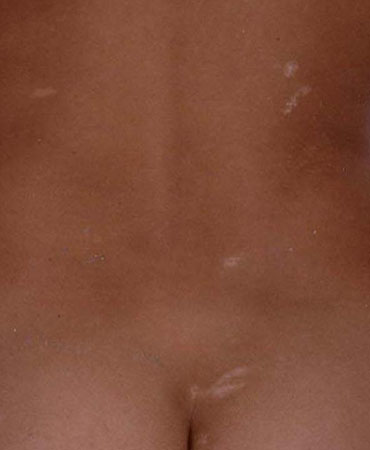History and exam
Key diagnostic factors
common
presence of risk factors
Risk factors include brain malformation, tuberous sclerosis, antenatal or perinatal vascular event (stroke, preterm intraventricular haemorrhage, hypoxic-ischaemic encephalopathy, traumatic birth injury), intrauterine or perinatal infections, inherited metabolic disorders, and genetic disorders.
spasms
Usually symmetrical, bilateral, brief contractions of the axial muscle groups and may involve the flexors, extensors, or both. They usually occur in clusters and are often seen on waking or falling asleep. Isolated spasms can occur.
Spasms can be asymmetrical and may manifest only as head drops or abnormal eye movements. Occasionally spasms are associated with feeding.
head nodding
Infants may present with characteristic spasms, or with just a head nod.
neurodevelopmental delay or regression
Spasms can occur on a background of developmental delay. An important diagnostic feature is loss of previously acquired skills, notably affecting visual skills. Occasionally development may be unaffected at presentation.
Other diagnostic factors
common
onset age 3-12 months
Onset is most common between 3 months and 12 months of age, but can occur as late as 3 years or as early as 1 month.
perinatal complication
These include birth hypoxia, traumatic birth injury, or perinatal/intrauterine infections.
abnormal eye movements
May be the only presenting symptom.
microcephaly
Can indicate an underlying cause such as brain malformations, perinatal injuries, neurometabolic disorders, or intrauterine infections.
ash-leaf macules
Hypopigmented skin lesions are associated with tuberous sclerosis. These can be difficult to see with the naked eye, but are easily seen with a Wood lamp examination, when the lesions fluoresce under ultraviolet light.[13][Figure caption and citation for the preceding image starts]: Ash-leaf macules in a child with tuberous sclerosisFrom the collection of Dr Teesta Soman and Dr Shelly Weiss [Citation ends].
motor system abnormalities
Neurological examination may reveal abnormal motor tone. The child may appear to be floppy if the truncal tone is low, or there may be hypertonia with spasticity.
Focal neurological signs are rare, but may indicate an underlying focal brain abnormality.[4]
Risk factors
strong
brain malformation
neurocutaneous abnormalities
Associated with infantile spasms: hypopigmented lesions/ash-leaf spots in particular, which can present in patients with tuberous sclerosis. Tuberous sclerosis caused by mutations in TSC2 is a particularly strong risk factor. Up to one third of children with tuberous sclerosis may develop infantile spasms. Performing a Wood lamp examination of the skin to aid detection of ash-leaf spots is therefore part of the clinical examination in a child presenting with infantile spasms. The lesions fluoresce under ultraviolet light.[13]
antenatal or perinatal vascular event
intrauterine or perinatal infections
These include herpes simplex, cytomegalovirus, toxoplasmosis, and HIV.[20]
inherited metabolic disorder
A wide range of metabolic disorders, including mitochondrial disorders, such as Leigh's disease, and aminoacidopathies, such as non-ketotic hyperglycinaemia, can present with infantile spasms.[21][22][23]
Other metabolic conditions include glucose transporter defects, homocitrullinaemia, phenylketonuria, Krabbe's disease, neonatal adrenoleukodystrophy, pyridoxine deficiency, pyridoxal-5-phosphate deficiency, disorders of cerebral folate metabolism, Menkes' disease, and biotinidase deficiency.
genetic disorders
Deletion or duplication defects such as trisomy 21 and mutations in the ARX and CDKL5 genes are well-established genetic causes of infantile spasms. There are now over 100 genetically characterised developmental and epileptic encephalopathies (DEEs).[12]
weak
family history
Having a sibling or any other family member with a diagnosed genetic or metabolic disease increases the risk of infantile spasms.
neonatal sinovenous thrombosis
Infants with thrombosis of the deep venous system are at risk.[24]
postnatal brain injury
Any postnatal traumatic brain injury can lead to infantile spasms.
Use of this content is subject to our disclaimer